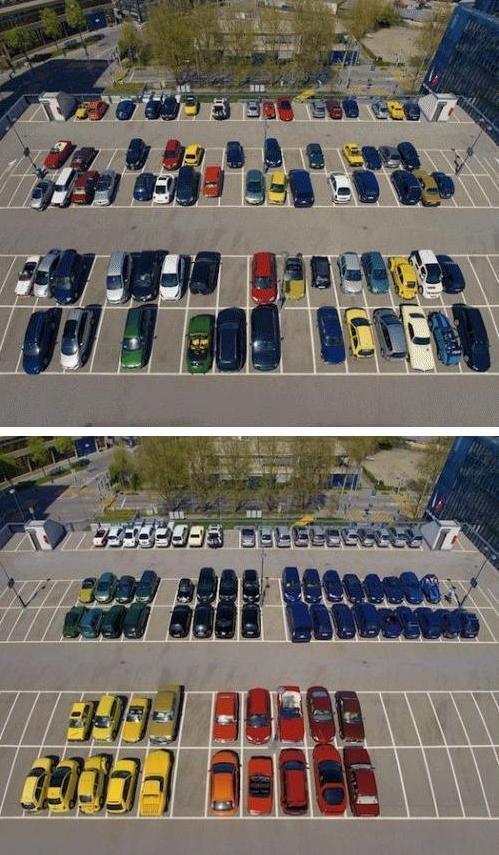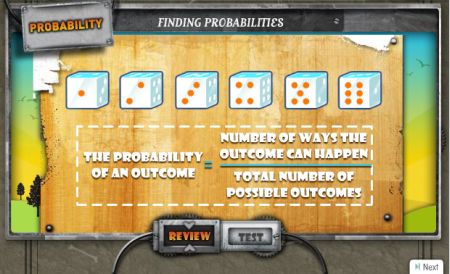You will be familiar with hearing discussions about probability in terms of words, if not quantities – “It isn’t likely to rain on the washing today”, “The chances of winning the lotto are very small” “It is equally likely that the other team will win”. For the remainder of this term we are going to use numerical representations of probability, including tree diagrams, two-way tables and Venn diagrams.
Chance
Using an iPod for probability experiments
Year 6/7 students continue to explore probability in our maths classes, today with iPod touches. “iChoose” is a free application, with a number of options for random choice results – coin toss, dice, cards, girl/boy and more. Students did timed trials to collect data (both coin tosses and dice throws) and collated class results. Each student used the iPod calculator to work out their percentages of each result and then compared individual data with class data to show that the greater the number of trials, the closer to the theoretical probability the experimental data gets.
We also used real dice and coins (swapping over so all students had a turn at both the real and virtual) and compared the results. At the end of the lesson, students completed an ‘exit slip’, with three important things that they have learnt about probability. Most students were able to complete this successfully, writing how to calculate probability, how all outcomes add to 100% and about experimental and theoretical probability. Even students with greater learning needs were able to state that they had learnt how to work out percentage and how to tally results. It is pleasing when you can engage students with a wide range of learning abilities in one class and hear that each of them has benefited from the lesson.
More Probability interactives on FUSE
Go to FUSE and type in the Learning Resource ID number into the search box to try each of these activities. Then leave me a comment below to tell me what you have learnt, which of the activities you enjoyed most and why you thought it was the best.
Fish tank probability at SYHVH2 – choose the number of fish to create specific probabilities.
Coin Tossing at LJRJ83 – see the results of 100 coin tosses and decide if it is a counterfeit.
Dice Duels – Airport subtraction at ES8BPH – roll the dice to see if your plane can take off.
Dice Duels – Airport addition at 5RUC3L – roll the dice to see if your plane can take off.
Dice Duels – Go-Kart Race – at CRMNX3 – roll the dice for Kart racing
What is the Probability you can use your netbook today?
Congratulations to all those students who were succesfully able to log on to the Ultranet on Friday! Well done. Today we are going to continue with the topic of probability using some computer activities. Firstly, we will go through some revision of what we have learnt so far using the BBC – KS3 Bitesize Maths site – Revision of Probability. Then you can do the BBC Bitesize Activity on your netbooks.
When you complete that activity, and if you feel confident, you can go on to the BBC Bitesize Probability Test. When you complete the test, take a screen shot of your result and save it in your maths folder as a JPG file (copy into Paint or Irfanview and rename with your name – for example, “Britt’s test”), then send it to me by email, making sure your name is attached.
If you think you need more practise before doing the test, you can try these activities:
FUSE – Foul Food Maker – What are the chances of worm pasta, fly soup, fetid fungi or a bug burger? (Easy)
Exploring Probability in the Snow – What is the numerical probability of a snow-boarder choosing a particular ski-run?
Hands-on – Create a spinnner where one result is double the chances of another (For example, you are twice as likely to spin a red as you are to spin a blue).
If you have an iPod – download iChoose – a simple program with a choice of a coin toss, dice throw or choose a card. Do ten trials and record your results, then ten more and add your results to another class members. What do you notice about the results as you record more trials?
What’s the Chance of Rain?
We often use the language of probability in conversation – “There’s a good chance of rain today” or “He is almost certain their team will win”. In mathematics, we can give precise values to the probability of a particular event occurring, ranging from 0 for impossible to 1 for certain. Draw a number line across your page, labelled zero at left and 1.0 and 100% at right. Mark 0.25; 0.50 and 0.75 on your line. Now match ‘likely’, ‘even chances’ and ‘unlikely’ on your line. Label where you think the following events will be:
- Essendon winning the coin toss at the beginning of the game
- Snow falls in Darwin
- Drawing a red heart card from a shuffled pack
- Rolling a six on a die
- A baby is born – it’s a girl!
- The sun rises in the east tomorrow
- Water boils in the fridge
- A horse wins the Melbourne Cup
- Mrs Gow winning Australian Idol
Chance and Probability
At the beginning of next term the Year 6/7 Maths classes will be starting a unit on Probability. We will use coins, dice, cards, spinners and coloured beads to perform experiments and calculate theoretical probabilities.
Draw a line across your page and mark ‘zero’ (impossible) at the left end and ‘one’ (certain) at the right end. Divide the line into quarters and mark 1/4 as ‘unlikely’, 1/2 as ‘even chance’ and 3/4 as ‘likely’. Give some examples for each category. For example, “The sun rising in the west” is impossible, a probability of zero; “Having a boy or girl baby” is equally likely, a probability of 1/2 or 50%.
“Two-up” is a classic Australian game, played on Anzac day and at casinos, which involves two coins being tossed from a “kip” (a flat piece of wood) into the air. Players bet on the outcome. Are all the possibilities equal? (2 heads, tail and head or 2 tails). Can you construct a spinner with which you would have the same chances of winning as a ‘two up’ game?
The National Library of Virtual Manipulatives has a couple of good tools for teaching and learning about Probability: Virtual Spinner with histogram for graphing results and Virtual Coin tossing.





